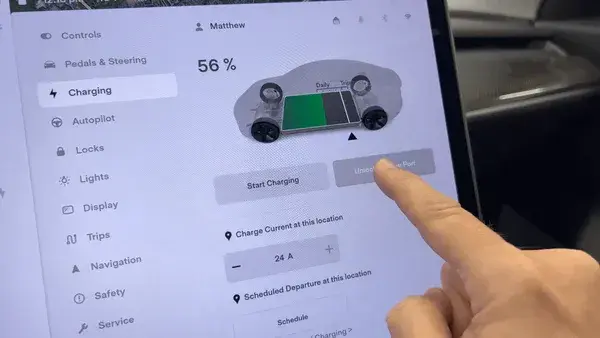Understanding the 80% Charge Limit: How to Charge Your EV Smartly for Longevity and Performance
Understanding the 80% Charge Limit: How to Charge Your EV Smartly for Longevity and Performance
Introduction
As electric vehicles (EVs) become increasingly mainstream, understanding how to charge them properly is essential to maximizing their performance and longevity. One of the most important—yet often overlooked—guidelines is the 80% charge limit. This isn't just a recommendation from China EV Charger manufacturers; it’s a crucial practice for preserving battery health, ensuring safety, and optimizing long-term vehicle performance.
This article explores why the 80% charge limit matters, the different types of EV chargers available, and how you can develop a smarter charging strategy to keep your electric vehicle running efficiently for years to come.
Understanding EV Charging Levels: Types and Speeds
Electric Vehicle Service Equipment (EVSE) comes in different configurations, each offering varying charging speeds. Knowing these differences helps you select the best option for your vehicle and lifestyle.
Level 1 Charging: The Basic Home Option
- Voltage: 120 volts AC (standard household outlet)
- Speed: Slowest option; charging a battery electric vehicle (BEV) from empty to 80% can take 40–50 hours. Plug-in hybrid electric vehicles (PHEVs) with smaller batteries typically take 5–6 hours.
- Best For: Overnight charging or when the vehicle remains idle for long periods.
Level 2 Charging: The Preferred Residential and Public Option
- Voltage: 240 volts AC (residential) or 208 volts (commercial)
- Speed: Significantly faster; BEVs can reach 80% in 4–10 hours, PHEVs in 1–2 hours.
- Availability: Widely used in homes, workplaces, shopping centers, and public spaces.
- Best For: Daily residential charging, workplace charging, and public use.
DC Fast Charging (DCFC): Rapid Power on the Go
- Speed: Fastest option; BEVs can reach 80% in 20 minutes to 1 hour. PHEVs generally do not support DC fast charging.
- Use Case: Ideal for long-distance travel or quick top-ups when time is limited.
- Note: Although convenient, frequent use of DCFC can impact battery health, making the 80% charge limit especially important here.
Why the 80% EV Charge Limit Is More Than Just a Recommendation
Charging your EV to 100% might seem beneficial for maximum range, but it can have long-term negative consequences. Most manufacturers advise keeping your battery’s charge at or below 80% for regular use. Here’s why:
1. Battery Longevity: Protecting Your EV’s Most Valuable Asset
Lithium-ion batteries degrade faster when regularly charged to full capacity. High charge levels increase stress on battery chemistry, leading to:
- Accelerated degradation
- Reduced range over time
- Shortened overall battery lifespan
Maintaining an 80% charge preserves battery cells’ integrity, slowing capacity loss and ensuring your EV performs well for years.
2. Thermal Management: Avoiding Dangerous Heat Build-Up
High charge levels, especially during fast charging, generate excess heat — a key enemy of battery health. Excessive heat can:
- Degrade battery materials
- Reduce efficiency
- Increase safety risks
Certified EV chargers typically include smart thermal management, adjusting charging speeds to prevent overheating.
3. Charging Equipment Matters: Use Certified Chargers Only
Quality matters. Certified chargers (e.g., UKCA, CE marked) deliver steady current, prevent overcharging, and operate within safe voltage and temperature ranges. Using uncertified or cheap chargers can risk your battery’s health and your vehicle’s safety.
4. Fast Charging vs. Battery Health: Striking the Right Balance
DC fast chargers offer convenience but can accelerate battery wear if used frequently beyond 80%. For daily charging, Level 2 chargers and the 80% limit help maintain battery health. Many smart chargers even allow you to set this cap automatically.
5. Smarter Charging Strategies: Customizing for Your Needs
- Daily Commuters: Charging to 80% overnight via Level 2 chargers meets typical daily range needs while protecting battery health.
- Long-Distance Travelers: Charging beyond 80% occasionally for road trips is fine but should be the exception.
- Fleet/Commercial Use: Implement smart charging policies and software to limit full charges, preserving battery life and reducing electricity costs.
Benefits of Following the 80% Charge Rule
Consistently observing the 80% limit offers:
- Improved Battery Lifespan: Extends the life of the most expensive EV component.
- Better Long-Term Performance: Maintains optimal range and efficiency.
- Reduced Maintenance Costs: Less battery stress means fewer repairs.
- Sustainability: Longer-lasting batteries reduce environmental impact by lowering premature replacements.
Looking Ahead: Smarter EV Charging Is the Future
Modern EVs often include Battery Management Systems (BMS) that allow drivers to limit state of charge (SOC). Home chargers are evolving with smart features enabling users to:
- Set charge limits (e.g., 80%)
- Monitor energy consumption
- Schedule off-peak charging to save money
- Receive battery health alerts
These advancements protect batteries while optimizing energy use and costs.
Conclusion: Charge Smart, Drive Far
Charging your EV to 100% every time might feel intuitive, but it isn’t optimal for your battery’s health. Following the 80% charge limit is a simple yet powerful way to extend your EV’s lifespan, maintain its range, and ensure safer operation. Combining high-quality, certified chargers with smart charging strategies helps you get the most from your electric vehicle — mile after mile, year after year.Know more about Google SEO Directory
